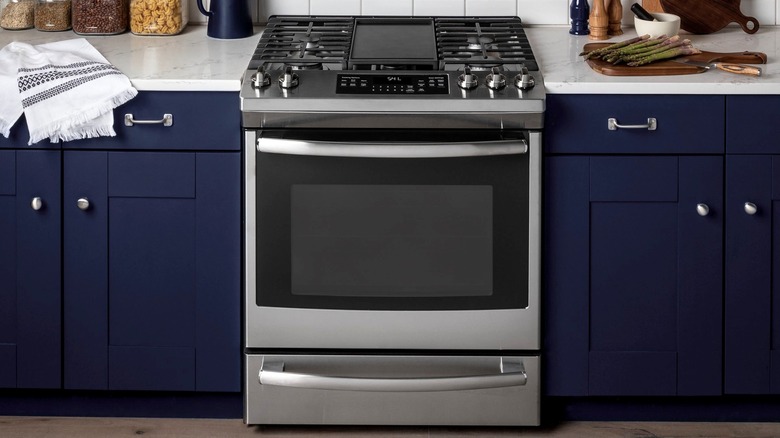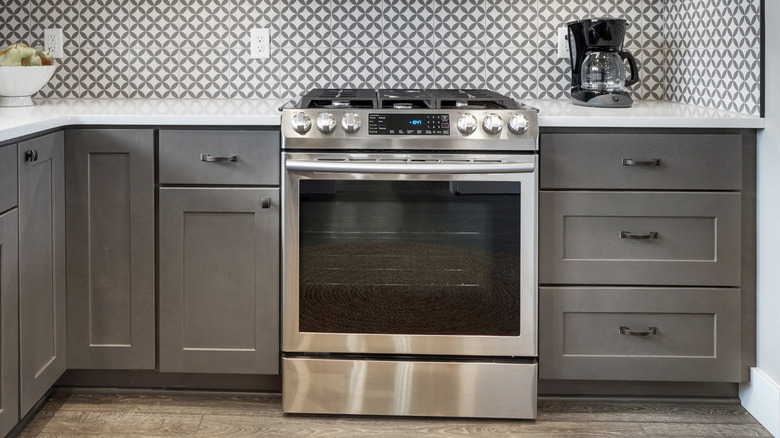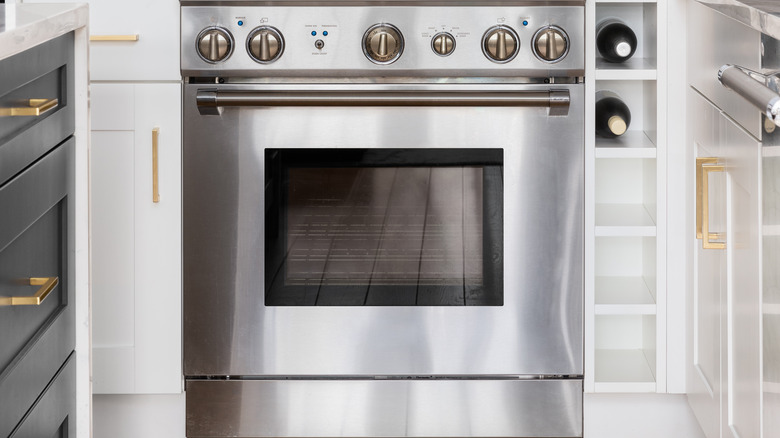You've Been Using The Drawer Under Your Oven Wrong. Here's What It's Really For
One of the best parts about cooking or baking in an oven is the inevitably sweet and savory smells that waft from those oven doors, whether you're roasting a chicken or baking homemade brownies. And if you're lucky enough to have double ovens, these appliances are also a great way to prepare with ease if you're hosting a big dinner.
But what if you're limited to just one oven? You don't want the food to get cold too quickly, but when different dishes cook at different temperatures, it can be impossible to prepare two things in the oven at once. In this case, there is a little secret you're probably not taking full advantage of: the food warmer.
Yes, you read that right. Every oven has a food warmer, and you're most likely using it to keep your pots and pans warm instead. That little storage compartment below the oven — the one that's currently hiding your cookware — is designed to keep food warm.
Your bottom oven drawer is meant to keep food warm
While you might not need a food warmer when preparing any given weeknight dinner, if you've ever hosted a holiday or large dinner, you've likely found yourself trying to keep things warm by either purchasing hot plates, covering food with tin foil (hello, soggy condensation) or putting it back in the oven once everything is done, leading to a potentially dried-out dish.
Surprisingly, the solution is right in your oven. That drawer at the bottom is meant for warming foods — not for storage. The heat from the oven seeps down into this drawer, but only enough to keep the food warm; it won't overcook it. Some ovens even have their own food warmer controls.
Next time you're worried about serving guests cold food, remove those pots and pans from that drawer. Find another place for them, such as on a hanging rack elsewhere in the kitchen, and let that food warmer serve its purpose.
How long can you keep food in the food warmer?
While the warming drawer can be a life saver when it comes to keeping food warm, there is one important note: if you plan to keep food in there for a couple of hours, make sure the temperature is above 140. The "danger" zone (the zone in which food can quickly grow bacteria) ranges from 40-140 degrees, which means your warming drawer should be a minimum of 140 degrees to keep food hot and safe. If it's above 140, you can keep it in there for several hours, but a drawer below 140 should not hold food for more than two hours.
According to GE, food warmers range in temperature depending on the voltage of your home, but they should reach at least 140 degrees; they might go as high as 250, in which case you won't want to leave the food in there for more than 15-20 minutes, or it could dry out. If you're unsure of how hot your drawer warmer gets, it might be best to take a thermometer, place it in the closed drawer, and measure its temperature.


